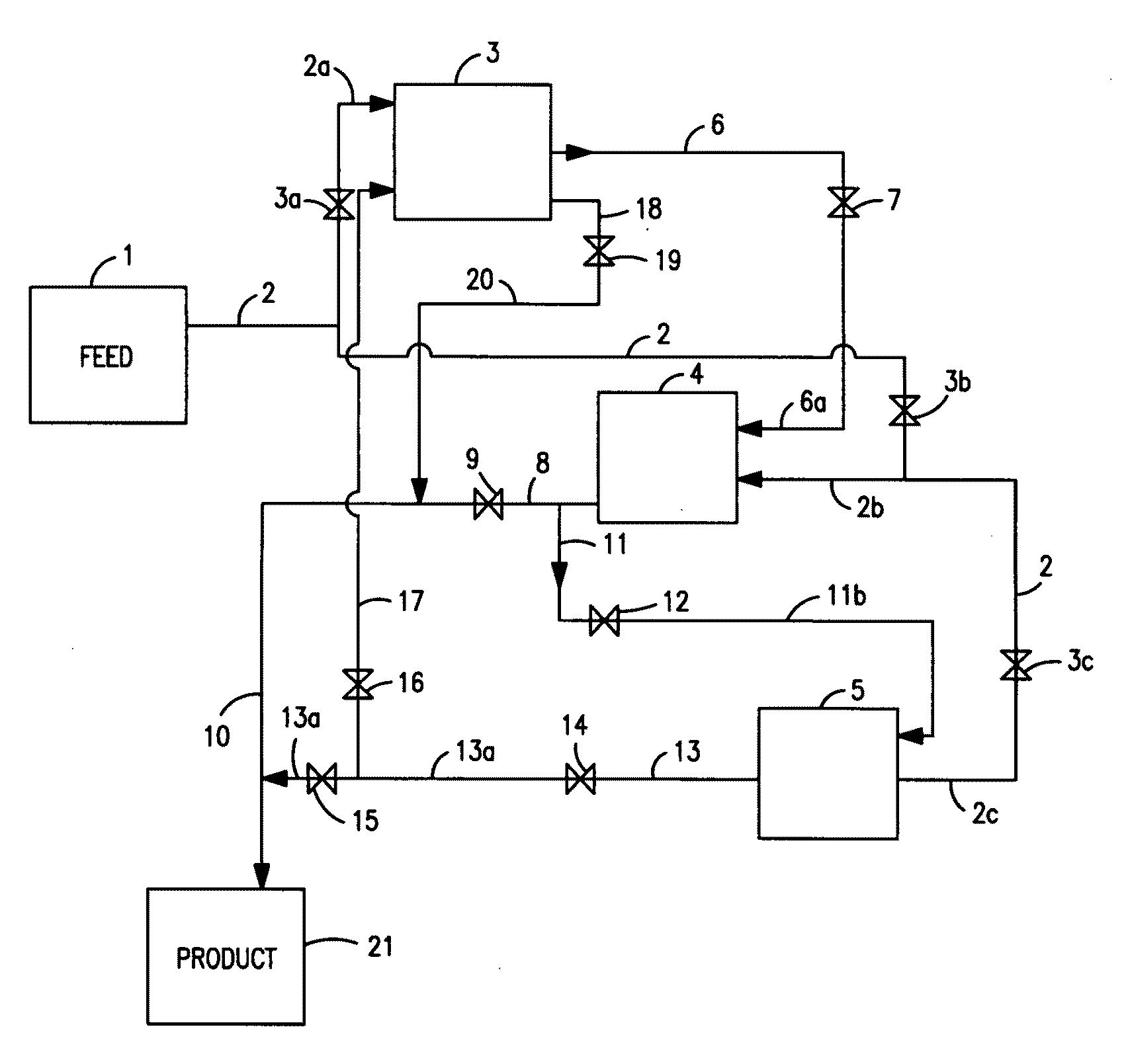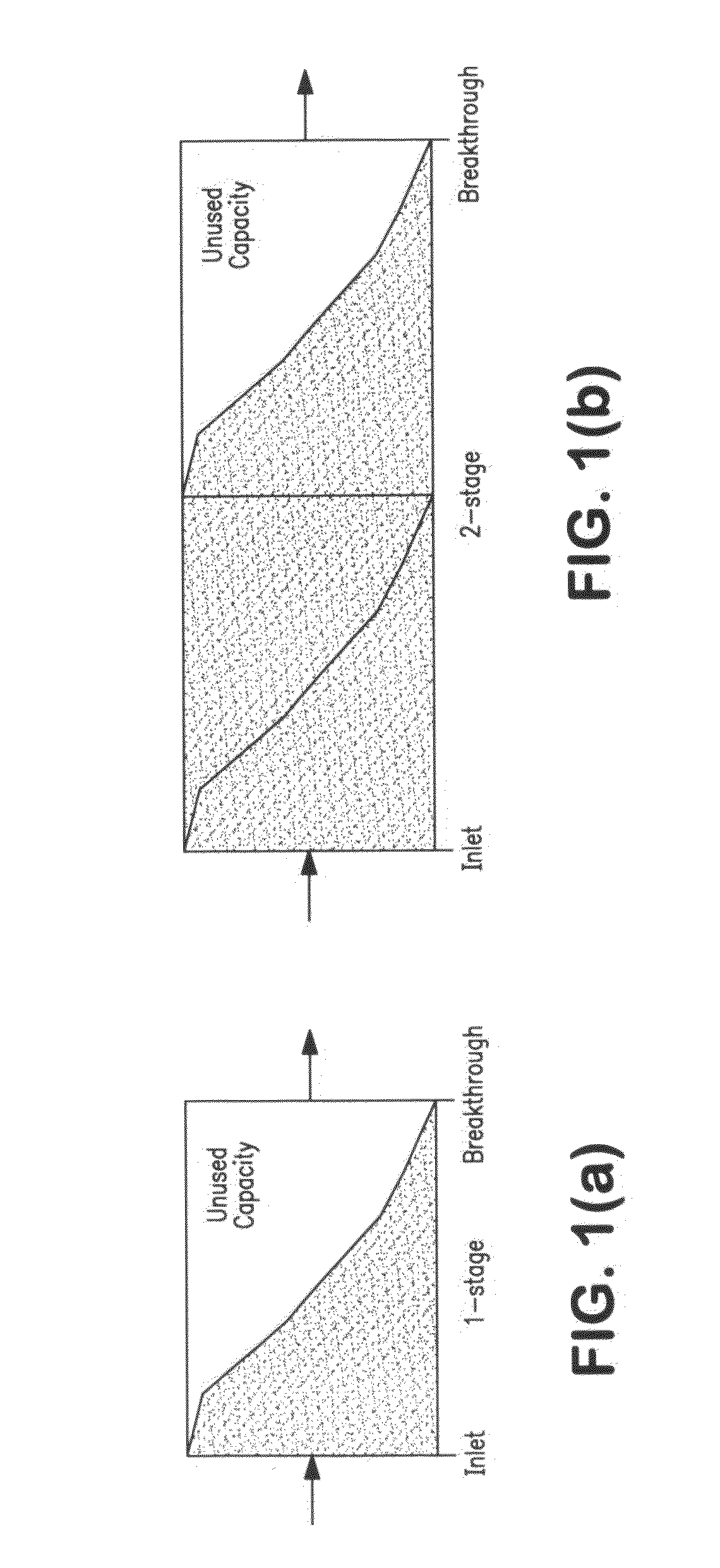Method for haze mitigation and filterability improvement base stocks
a technology of filterability and base stocks, applied in the field of base stocks, can solve the problems of severe yield loss, low level haze formation of heavy base stocks including heavy mineral oil base stocks and heavy gtl base stocks, and methods that do not remove small amounts of haze or haze precursors
- Summary
- Abstract
- Description
- Claims
- Application Information
AI Technical Summary
Problems solved by technology
Method used
Image
Examples
example 1
[0115]Various materials having pores of larger dimension (0.8 to 2.5 micron) were evaluated both as single layer and double layers of material. Each layer was about 0.3 mm thick. The filter media disks were supported by a drainage plate and sealed by O-rings in a steel housing. The filter media tubes were attached by tubing to the feed reservoir. Fluid flowed into the inside of the media tubes and through the media to the outside, where it was collected. Pressure on the feed reservoir in both cases was adjusted to maintain the desired flux of fluid through the filter.
[0116]The feed was GTL heavy wax isomerate, prepared from a full range Fischer-Tropsch wax by 2 stages of catalytic hydroisomerization, followed by distillation and then hydrofinishing. Its kinematic viscosities at 40 and 100° C. are 94.98 and 14.3 mm2 / s, respectively, and its 5 and 95% distillation temperature are 904 and 1234° F. (484.4° C. and 667.7° C.), respectively, and its cloud point is 8° C. The feed was used i...
example 2
[0120]Additional experiments were carried out with the same feed as used above but using 25 mm diameter glass fiber media discs. The first 25 ml of filtrate were evaluated. The results indicate that flux of about 0.10 liter / (s·m2) is effective for dehazing but flux of about 0.68 liter / (s·m2) of face surface area is ineffective for dehazing.
Media nominalpore size, micronsFlux, liter / (s · m2)NTU(feed)1.42.00.680.952.00.100.092.70.100.09
example 3
[0121]These examples show media with low energy surfaces. The media were fiber membrane discs of polyvinylidene difluoride about 0.2-0.5 mm thickness. Pressure drop across the media was 2).
Turbidity, NTUTurbidity, NTU5 micron0.45 micronTime afterpolyvinylidenepolyVinylidenefilteringNo filterdifluoride fiberdifluoride fiberGTL feed usedFeed 1Immediate~2.5 6 monthsFloc0.2 flocFeed 2Immediate11.210.8 21 months11.610.0 Feed 3Immediate 4.22.221 months 2.92.0Feed 4Immediate 2.50.721 monthsMuch floc
All feeds are GTL heavy wax isomerates, prepared from a full range Fischer-Tropsch wax by 2 stages of catalytic hydroisomerization, followed by distillation and then, for feeds 1 and 4 only, hydrofinishing. The GTL heavy wax isomerates were used in an undiluted form.
CloudFeedkV@40 C.kV@100 C.pt, C.Pour pt, C.5% pt95% pt114.37-8−249041234295012863113.815.9−6−459461259485.8613.166−329291199
[0122]This example demonstrates that at a sufficiently small pore size even polymeric media of low surface e...
PUM
| Property | Measurement | Unit |
|---|---|---|
| Temperature | aaaaa | aaaaa |
| Temperature | aaaaa | aaaaa |
| Temperature | aaaaa | aaaaa |
Abstract
Description
Claims
Application Information
 Login to View More
Login to View More - R&D
- Intellectual Property
- Life Sciences
- Materials
- Tech Scout
- Unparalleled Data Quality
- Higher Quality Content
- 60% Fewer Hallucinations
Browse by: Latest US Patents, China's latest patents, Technical Efficacy Thesaurus, Application Domain, Technology Topic, Popular Technical Reports.
© 2025 PatSnap. All rights reserved.Legal|Privacy policy|Modern Slavery Act Transparency Statement|Sitemap|About US| Contact US: help@patsnap.com



